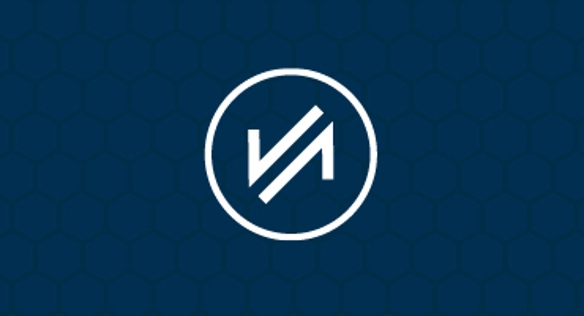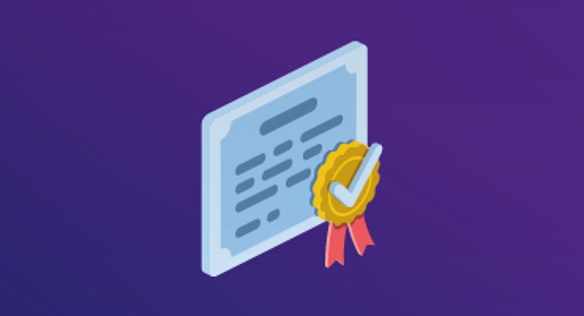As of June 1, 2023 Cyber Aces was retired. The program was launched over ten years ago and the content is now out-of-date
We have included a series of resources and learning videos on this refreshed page to assist your cybersecurity education, and will continue to make updates in the future.
Learn the Fundamentals of Cyber Security for Free!
SEC275: Foundations - Computers, Technology, & Security
SEC275 is the best course available to learn the core knowledge and develop practical skills in computers, technology, and security foundations that are needed to kickstart a career in cybersecurity. The course features a comprehensive variety of innovative, hands-on labs, and practical exercises that go far beyond what is offered in any other foundational course in cybersecurity.
Take a look at two segments of this course below, which we have made available for free.
Introduction to Computer Hardware CPU
This short segment of the course provides you with an introduction to computer hardware CPU, providing an overview of the functions and components.
Networking SMTP Protocol
In the networking section of the course, we cover the inner workings of a network in order to understand how computers communicate with each other, and for what reasons. Learn about networking concepts such as IP addresses, packets, protocols, and more. This particular segment provides you with a demonstration of the SMTP Protocol.
Get a Free Hour of SANS Training
Experience one hour of free SANS Cyber Security Training through course demos, available for 65+ courses. Preview course content, see our top instructors in action, evaluate difficulty level, and try out our OnDemand training platform. New to cyber? Here are some great course demos to get you started:
FAQs
Why Take Free Cyber Security Courses Online?
Taking free cyber security courses is a great first step when searching for your new career in cyber security or your next career in another IT or cyber security field. Free courses allow you to get a feel for the subject matter without investing a lot of money: all you need is time and a drive and desire to learn.
Those in the cyber security community love to share their knowledge. Security experts often develop their own online courses, many of them for free. These free resources provide real-world experience and knowledge from security experts across the globe. These resources are not just for those who are short on cash. Industry experts also utilize these free resources due to the value of the content. It can’t be understated how valuable the free information shared by the cyber security community is to experts as well as those new to the field.
How can I get cyber security training for free?
Free cyber security training exists all over the internet. Several industry-leading organizations provide free cyber security training to combat the number of unfilled cyber security positions across the globe and to increase the number of those who are underrepresented in the field of cyber security.
One of the most well-known free cyber security training resources is YouTube. YouTube has millions of hours of content, much of it devoted to educating those interested in learning. Whatever your cyber security interest, YouTube will have content on that subject, often provided by cyber security experts or industry-leading businesses in the field.
Coursera is another great resource for training. While Coursera is probably most well-known for its faculty being made up of professors from some of the most prestigious universities across the planet, the training provider also allows students to audit many of their courses for free. There are some limitations, based on the course and the instructor, when auditing a course. For instance, when auditing a Coursera course, you may not have access to the class discussion forum or the tests or final exam, and you won’t get a certificate of completion, however, in most cases you have access to all course materials and everything you need to complete the course.
Many of the top universities have open-source courseware freely available that allows you to learn cyber security concepts from some of the best college-level instructors. The world-renowned Massachusetts Institute of Technology (MIT) has provided its OpenCourseWare program since 2001 as an avenue to help lead a “revolution in free access to knowledge.”
Another excellent resource for free training is the SANS Institute. SANS, the world’s largest provider of online cyber security training, has many free training resources. Joining the SANS community provides you free access to workshops, tools and cheat sheets, webcasts, white papers, newsletters, research, cyber ranges, and many other world-class cyber security training resources.
Are there any free cyber security certifications?
There are indeed free cyber security certifications available. Google recently released its new free Cybersecurity Professional Certificate. Google’s expert cyber security professionals built this certification for those with no relevant experience and so students can learn at their own pace. Google’s certificate program imparts skills that can have you in a new cyber security career in less than six months. Google’s certificate program is hosted by the online training provider Coursera.
The Google Cyber security Professional Certificate covers the following topics:
- Cyber Foundations
- Managing Risk
- Network and Network Security
- Linux and SQL
- Assets, Threat, and Vulnerabilities
- Detection and Response
- Python Automation
Can I learn cyber security on my own?
Yes! You can absolutely learn cyber security on your own! Thanks to the vast number of free resources available on the internet, self-learning has never been easier. The internet is awash in both free and paid materials and resources, (see the above question “How can I get cyber security training for free?”)
Some tips for learning cyber security on your own:
Start with the basics. Learn the foundational IT and cyber skills first.
Join a community. The cyber community is robust and loves to share. Everyone in cyber learns from everyone else.
Take a course or two. Again, start with the foundational courses.
Find a specialty. Find an area of cyber that interests you most and research additional resources, courses, and certifications to learn more.
Certify! There are a ton of options when choosing a certification provider. Do your research!
Find your career. With the knowledge you’ve gained in your self-learning, you now have the skills and perhaps even a certification or two. So, now it’s time to find a job!
How Long Do Free Online Courses Take?
Online courses vary in length based on several factors; subject, course format, and cost are but a few. Introductory courses may be shorter, in the 1–4-week range, while advanced courses can take months. Depending on the course format you choose, you could complete the course in as little as a week or in as many as four months. Self-paced online courses often provide the most flexibility and amount of time to complete the course.
Are Free Cyber Security Courses Worth It?
The short answer is it depends. If the provider is reputable and the material is current, then the course is worth it. Getting a straight answer to this question requires research. Research the provider, join a cyber security community and see what courses they say are valuable to them, and read reviews. Another way to learn if a course is worth it to you is to audit the course if the provider allows. Oftentimes, providers provide limited access or trials of their courses so you can get a feel for it and see if it is indeed worth it.







